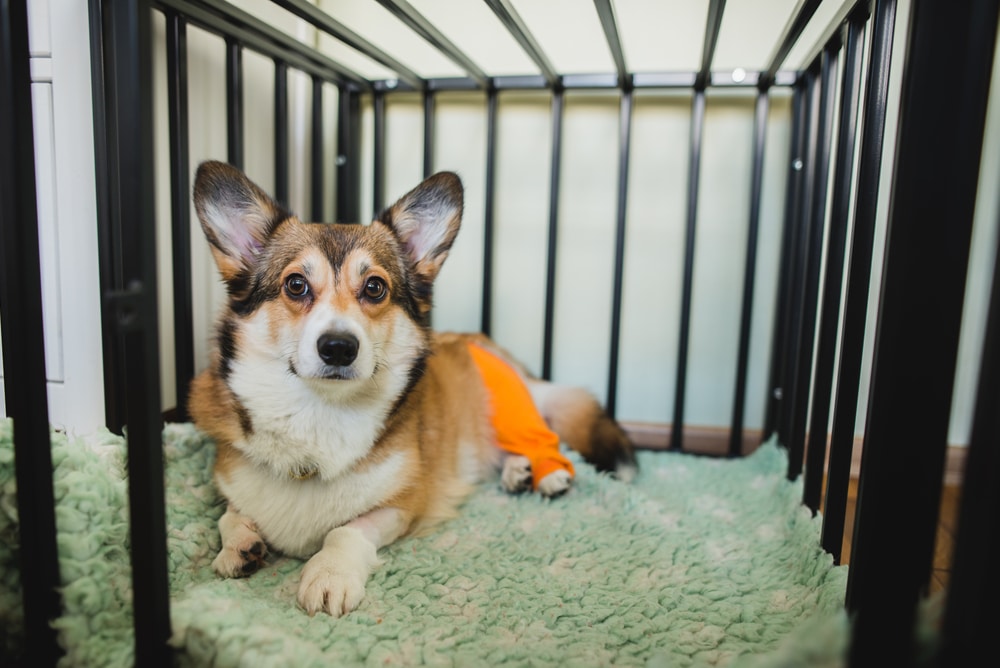Seeing your beloved pup in agony is a heartbreaking experience. Whether it’s whimpering, limping, or yelping out loud, you can’t help but want to soothe it and ease its pain immediately. But how do you respond if your dog breaks a limb?
It’s essential to remain calm and assess the situation before contacting your veterinarian for advice on how to treat your dog if it breaks a limb. Then, you should prepare to transport your dog safely, provide necessary care at home, monitor it for signs of infection or further injury, and follow up with regular checkups. Also, give it plenty of love and affection during this difficult time.
Table of Contents
- What To Do If Your Dog Sustains A Broken Limb
- Remain Calm And Assess The Situation
- Contact Your Veterinarian For Advice
- Prepare To Transport Your Dog Safely
- Follow Instructions From The Vet
- Provide Necessary Care At Home
- Monitor Your Dog For Signs Of Infection Or Further Injury
- Make Sure You Follow Up With Regular Checkups
- Consider Preventative Measures For The Future
- Make Sure To Give Your Pup Plenty Of Love And Affection
- Can A Dog Heal Its Broken Limb?
- How Do I Know If My Dog’s Limb Injury Is Serious?
- Can You Touch A Dog’s Broken Leg?
- In Conclusion: What Should I Do If My Dog Breaks A Limb?
What To Do If Your Dog Sustains A Broken Limb
If your dog has sustained a broken limb, seek urgent medical attention. Broken bones can be severe and painful injuries that shouldn’t be ignored. Here’s what to do.
Remain Calm And Assess The Situation
Remain composed and evaluate the situation. To adequately address your pup’s broken bone, it is essential to keep your cool. Take a few deep breaths and focus on the task at hand.
Assessing the severity of the injury requires a level head; don’t let emotions get in the way of helping your furry friend.
Contact Your Veterinarian For Advice
Contacting a veterinarian for advice is essential if your dog has broken a limb. Schedule an appointment, call the office directly, or look up 24-hour veterinary services in an emergency. For urgent help, vet hotline consultations may provide immediate assistance as well.
Prepare To Transport Your Dog Safely
To guarantee your dog’s well-being, plan to transport it securely and comfortably. Utilize a secure, large box or pet enclosure with towels and blankets for extra support. If the limb is fractured, keep it neutral and use a bandage or splint to prevent movement during transit.
Follow Instructions From The Vet
When your vet examines your pup, they’ll be able to identify the severity of the fracture and offer advice on what treatments may be necessary. This can include:
- Setting the bone back in place using splints or casts
- Surgery for realigning broken bones
- Repairing any damage to tissue
- Immobilizing it with a splint
Follow their instructions carefully to ensure the best potential outcome for your dog.
Provide Necessary Care At Home
Providing necessary care to a dog with a broken limb is crucial for healing . Monitor your pup closely and give it plenty of love, attention, and rest.
Follow your vet’s advice regarding medications to ease pain and discomfort and keep the area around the wound clean and dry. Avoid contact with any foreign objects. With love and care, your pup will soon be back to normal.
Monitor Your Dog For Signs Of Infection Or Further Injury
Monitor your pup closely for signs of infection or further injuries, such as:
- Redness
- Swelling
- Heat
- Foul smell
Contact your vet immediately if any appear. Infections can spread rapidly and become serious. Don’t let them go untreated! Keep an eye on your dog; early detection is key.
Make Sure You Follow Up With Regular Checkups
For a successful recovery, following up with regular checkups is essential. Keep track of your progress and ensure any needed treatments or adjustments are being made, especially for broken bone injuries that require careful monitoring.
Consider Preventative Measures For The Future
One of the best ways to ensure your pup’s safety and prevent future limb injuries is by keeping an eye on its activity. On walks, keep it leashed to avoid any accidents or incidents.
Pet-proof your home too; remove any potential hazards that could harm your dog. Being vigilant helps keep your pet safe!
Make Sure To Give Your Pup Plenty Of Love And Affection
Give your pup plenty of love and support while recovering from a broken limb. Dogs need emotional support, so make sure to give your pet lots of cuddles, treats, and attention.
You may have to help your pup get around the house while it heals. Provide any necessary assistance it requires. Show your dog it’s still part of the family, even in difficult times.
Can A Dog Heal Its Broken Limb?

Without proper alignment, immobilization, and medical care, broken bones cannot heal. Without it, infections may develop, leading to sepsis or other dangerous complications. Fractured bone fragments can also cause nerve injury issues with abnormal sensations and a lack of strength in affected areas.
Without proper care from a veterinarian, allowing a broken limb to heal on its own can be dangerous for your canine companion. While bones do self-repair through remodeling, this does not guarantee the healing process will be successful or complete.
Seeking medical intervention is absolutely essential to ensure full and correct rehabilitation of your dog’s injury.
How Do I Know If My Dog’s Limb Injury Is Serious?
Visually identifying a fracture or break in your pup’s limb is the clearest sign of a serious injury. But other indicators, such as swelling, pain, and lameness, can point to issues that require medical attention.
If you notice changes in behavior like lethargy, lack of appetite, or depression after an accident or fall, it’s best to take your pet in for a full evaluation. Don’t wait to get help if you think your dog may have sustained an injury. The quicker they receive treatment, the better.
Can You Touch A Dog’s Broken Leg?
If you think your furry companion is enduring severe pain, refrain from trying to examine it. Even if it isn’t apparent that it’s hurting, manipulating broken bones or dislocated joints can create extra agony and may aggravate the injury.
A pup with a damaged limb will normally not permit contact with its leg and could lash out in an attempt to bite you. So, it’s best to let the professionals handle any interventions.
In Conclusion: What Should I Do If My Dog Breaks A Limb?
If your pup has broken a bone, immediate veterinary help is essential for successful recovery. Vets will provide the right treatment and monitoring to foster healing.
Additionally, watching your pet’s activity, providing extra love and support during recuperation, plus pet-proofing your residence can help avoid future limb trauma. With proper care, your pup can make a complete recovery and enjoy life to its fullest!
So, has your dog broken a bone or are you just preparing if they do? Let us know in the comments below!
